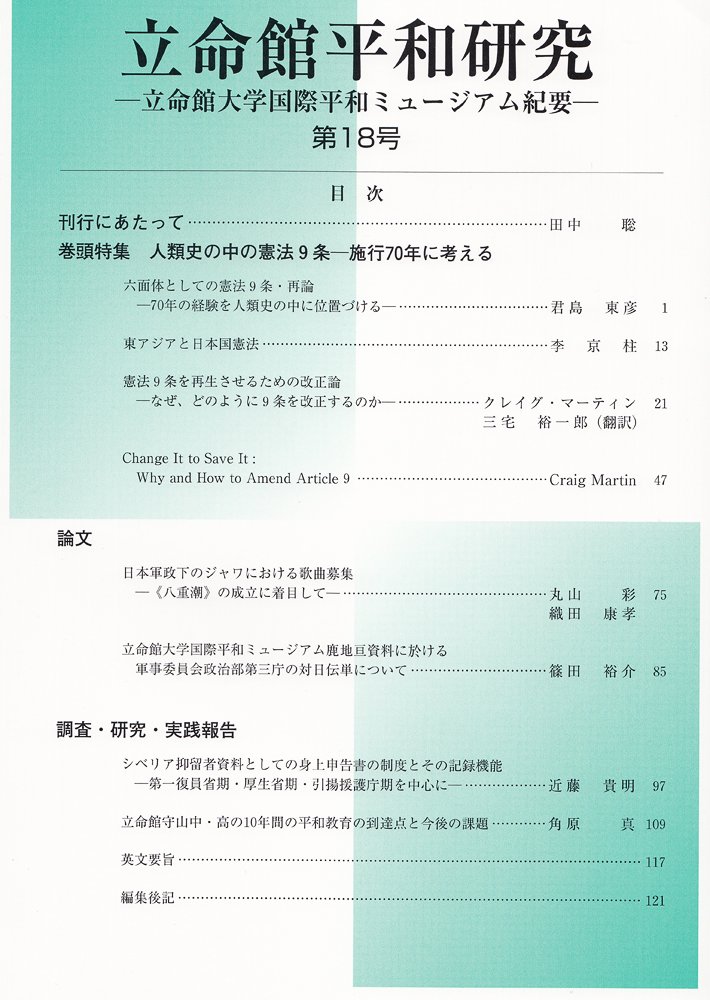 In April I published an article on why supporters and defenders of Article 9 of the Japanese Constitution, the war-renouncing provision, should be developing proposals for how to amend the provision. The article was published in the Ritsumeikan Journal of Peace Studies, in both English: Change It to Save It: Why and How to Amend Article 9, 18 Ritsumeikan J. Peace Studies (2017), and in Japanese: ??9??????????????????????9????????????????????????). The abstract in English is as follows:
In April I published an article on why supporters and defenders of Article 9 of the Japanese Constitution, the war-renouncing provision, should be developing proposals for how to amend the provision. The article was published in the Ritsumeikan Journal of Peace Studies, in both English: Change It to Save It: Why and How to Amend Article 9, 18 Ritsumeikan J. Peace Studies (2017), and in Japanese: ??9??????????????????????9????????????????????????). The abstract in English is as follows:
Defenders of Article 9 of the Constitution of Japan, which renounces the use of force and prohibits the maintenance of armed forces, have consistently worked to block any and all attempts to amend the provision. The government of Japan, having purported to “reinterpret” the provision in 2015, is now well positioned to finally achieve its goal of forcing some form of amendment. This article argues that the champions of Article 9 must, in order to save its most successful and core features, begin to develop alternative proposals for its amendment.
The article begins with a review of the meaning and operation of Article 9. It notes that the first paragraph, Article 9(1) (which is the prohibition on the use of force), is a clear constitutional rule that has effectively constrained government policy, but that the second paragraph, Article 9(2) (which prohibits the maintenance of armed forces and denies the rights of belligerency), has been transformed into an ambiguous standard that has been increasingly ineffective, and has given rise to a dangerous gap between norm and reality.
In arguing why Article 9 should be amended, the article explains the weaknesses in the provision that arise from the ambiguity and ineffectiveness of Article 9(2), analyzes the significant dangers inherent in the government amendment proposals, and the harm that will be done by the “reinterpretation” if it is not replaced by way of amendment. In explaining how to amend Article 9, the article provides draft language as a starting point for debate. It is designed to preserve and clarify the constraints on the use of force; eliminate the harmful gap between the current reality and the constitutional language, and establish civilian control and clear separation of powers in national security decision-making; and clarify the role of judicial review in enforcing the provision.
